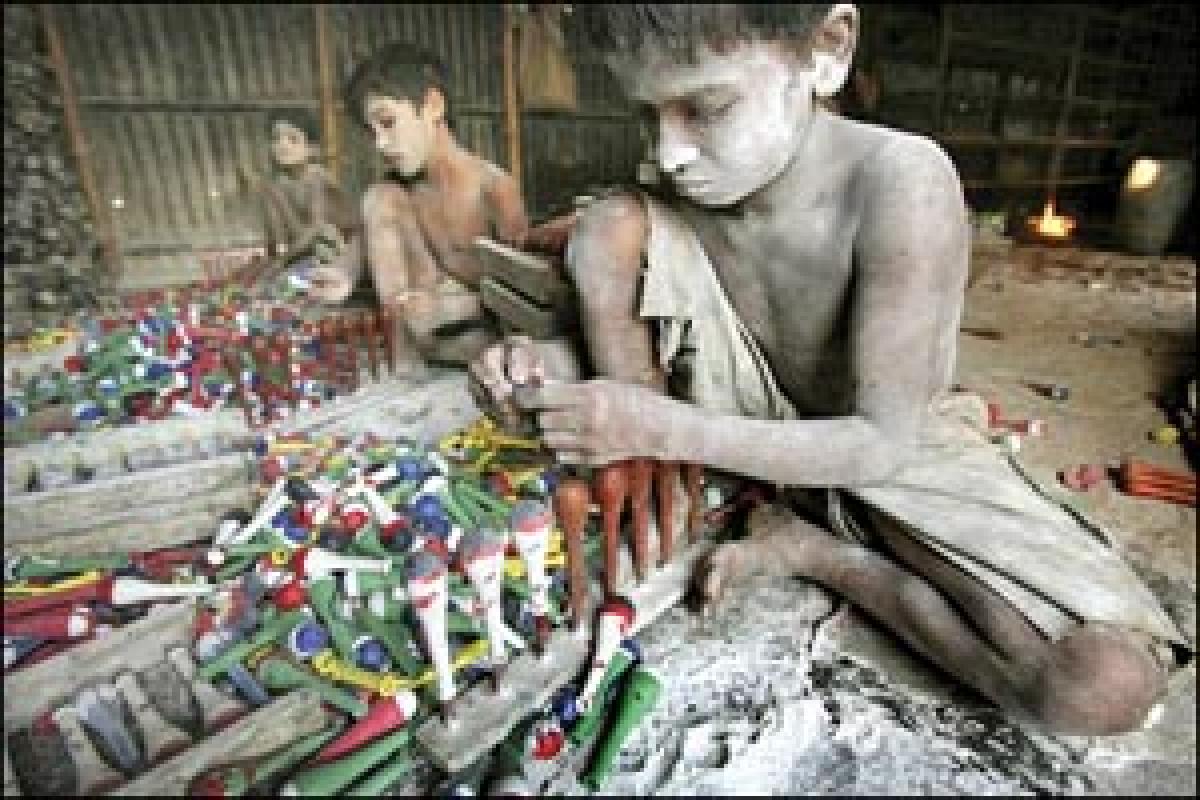Live
- Khichi elected mayor of Delhi
- Sports enthusiasts encouraged to focus on achieving their goals
- SC agrees to hear plea related to Delhi pollution
- Srikakulam: Cooperative Week celebrations take off
- National Library Week celebrations begin
- Bringing joy to MPP schoolchildren
- Contaminated food worth Rs 52,000 disposed
- BJP MLA warns of protest over Panchamasali reservation demand
- Sunspots and solar flares can affect Earth’s surface
- Discom staff neglect jungle clearance at poles
Just In

The Child Labour (Prohibition and Regulation) Amendment Bill, 2016 passed by Lok Sabha on July 26 mentions that its objectives are in line with ILO Convention 138 on Minimum Age (1973) and Convention 182 on Worst Forms of Child Labour (1999).
The Child Labour (Prohibition and Regulation) Amendment Bill, 2016 passed by Lok Sabha on July 26 mentions that its objectives are in line with ILO Convention 138 on Minimum Age (1973) and Convention 182 on Worst Forms of Child Labour (1999). However, India and Estonia are the two countries that are yet to ratify Convention 182 and are among the 15 countries that are yet to ratify Convention 138.
The Convention concerning the prohibition and immediate action for the elimination of the worst forms of child labour adopted by the International Labour Organisation at its 87th session in Ggeneva on June 17, 1999. It was resolved that each member shall take all necessary measures to ensure the effective implementation and enforcement of the provisions giving effect to this Convention including the provision and application of penal sanctions or, as appropriate, other sanctions.
Each Member is required to, taking into account the importance of education in eliminating child labour, take effective and time-bound measures to: (a) prevent the engagement of children in the worst forms of child labour; (b) provide the necessary and appropriate direct assistance for the removal of children from the worst forms of child labour and for their rehabilitation and social integration; (c) ensure access to free basic education, and, wherever possible and appropriate, vocational training, for all children removed from the worst forms of child labour; (d) identify and reach out to children at special risk; and (e) take account of the special situation of girls.
As per the Convention, the term ‘worst forms of child labour’ comprises: (a) all forms of slavery or practices similar to slavery, such as the sale and trafficking of children, debt bondage and serfdom and forced or compulsory labour, including forced or compulsory recruitment of children for use in armed conflict; (b) the use, procuring or offering of a child for prostitution, for the production of pornography or for pornographic performances; (c) the use, procuring or offering of a child for illicit activities, in particular for the production and trafficking of drugs as defined in the relevant international treaties; (d) work which, by its nature or the circumstances in which it is carried out, is likely to harm the health, safety or morals of children.

© 2024 Hyderabad Media House Limited/The Hans India. All rights reserved. Powered by hocalwire.com







